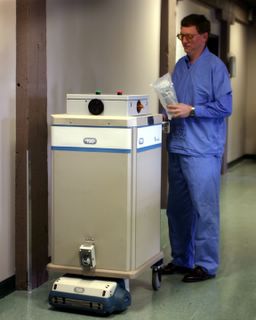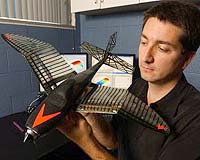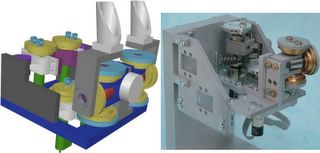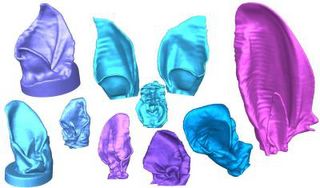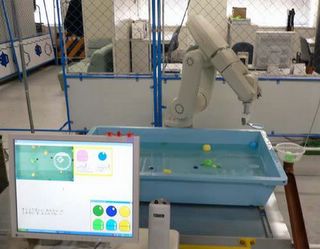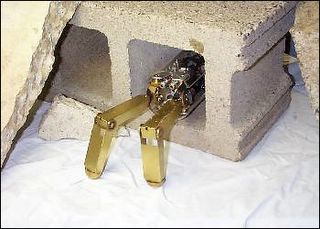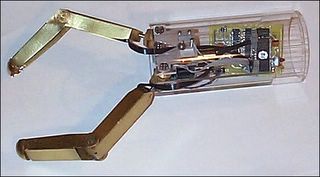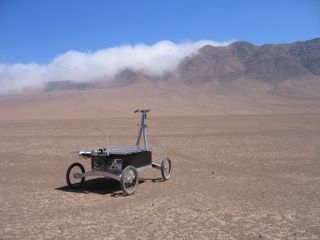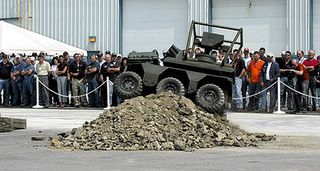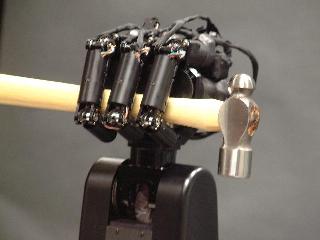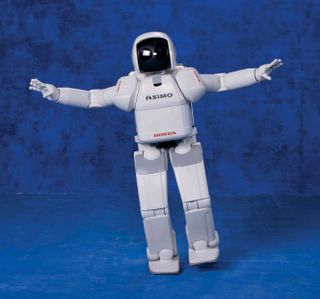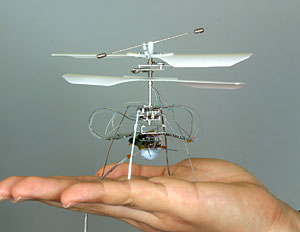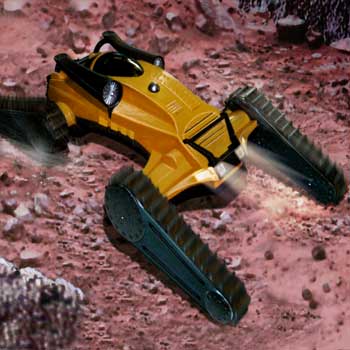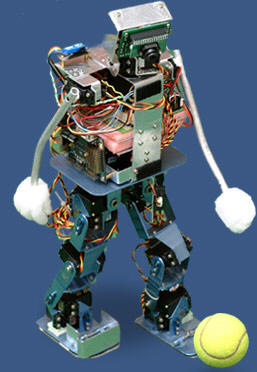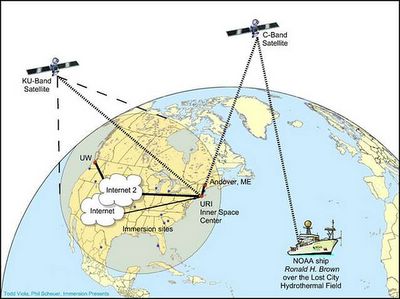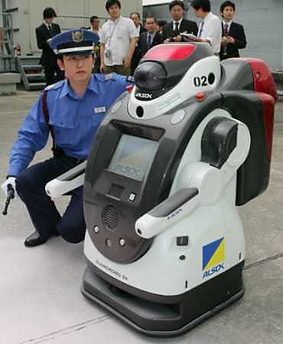Lunar penguin robots to hop across the Moon
NewScientist.com news service
Will Knight
The first lunar colonists may not be a humans but compact robots capable of jumping more than a kilometre in a single bound.
Engineers at US defence contractor Raytheon, in Massachusetts, have developed a robot, dubbed the Lunar Penguin, that could one day bounce across perilous craters and imposing mountains on the Moon's craggy surface using a set of compact rocket boosters.
"Since we could set it down in such a precise location, the Penguin could be the delivery vehicle for the science community," Raytheon engineer Karleen Seybold, who is leading the Penguin project, told Reuters.
The Lunar Penguin was publicly demonstrated for the first time on Tuesday at the American Institute of Aeronautics and Astronautics' 2005 SPACE Conference and Exhibition in California, US.
...the Lunar Penguin's unique approach to lunar locomotion could prove a useful way of exploring the Moon’s hostile landscape. "If it's successful, perhaps we could find astronauts on the next manned Moon mission using the same system to jump over hills," he says.
New Scientist Breaking News - Robotic space penguin to hop across the Moon
Labels: Lunar robot



